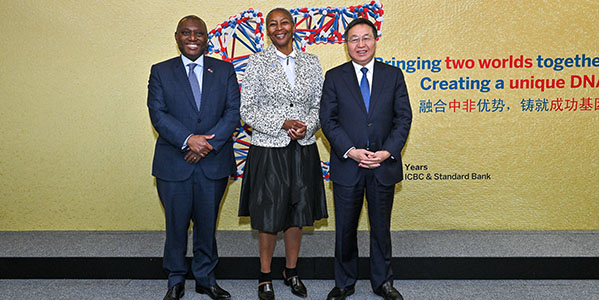
Increase in digital activity prompts proliferation of cybercrime
The spread of the novel Coronavirus across the world has created new opportunities for online fraudsters who are exploiting the vulnerability of users confined to their homes, taking advantage of their reliance on the Internet to access information and services.
“Fraudsters thrive in desperate times,” says Andrew van Der Hoven of Standard Bank. “They know that there is communication around Covid-19 relief and support for those who may find themselves in financial difficulty and use that as a hook to reel in users.”
During the month of April, Standard Bank saw a increase in common cybercrime techniques such as phishing scams where fraudsters try to entice customers to reveal personal and sensitive information through fake emails, SMSs or websites.
Van der Hoven explains that the highest volumes of cyber fraud are perpetrated on the Internet Banking channel, which is largely accessed via desktop or laptop. “Desktop-banking remains an easier target for data breaches as the verification process is based on a pin and password combination.”
He says that a sizeable portion of Standard Bank customers still use internet banking to conduct their banking activities. While this usage dropped off during lockdown, it is now ticking back up again as more customers return to their places of work.
“Not everyone uses a password manager or, worse, stores their password in their browser. This can expose users to vulnerabilities.”
Meanwhile, with mobile app-based banking, “we see very few instances of online fraud cases as biometric enablement has become a common feature on most mobile devices. This provides for a much-improved security experience,” Van der Hoven says. Furthermore, if you have registered for the Standard Bank app you can use this to login to your internet banking profile vastly increasing your security.
“Many of us with smartphones will already have biometrics enabled such as facial recognition or thumbprint, which makes it difficult for anyone else to access the device. When these security points are permitted, it provides a better way of verifying whether someone is who they claim to be as opposed to password verification.”
As biometric capabilities for mobile continue to evolve and develop, the mobile phone is becoming an online extension of a customer as an individual.
“As we progress on our journey to become fully automated, we know that security is an integral part of it,” says Van der Hoven. “The banking industry has been plagued by fraud on digital platforms and controls must be put in place to protect customer information.”
In recognition of this, Standard Bank began a process recently to link physical and digital identities. The DigiMe solution, launched at the beginning of the year, is an innovative solution designed to empower customers, and only those individual customers, with control over their banking activities.
DigiMe makes use of the latest biometric and facial recognition software, combined with two factor authentication to create a safe and secure banking experience.
Customers have largely welcomed the offering with enthusiasm. Standard Bank now has over 1 100 customers registering to use DigiMe daily, which is helping to protect their transactions when banking using mobile channels.
The new security feature can be activated via the Standard Bank mobile app on the user’s profile where they can select the ‘link and secure your profile’ feature. This prompts users to begin the process to activate the DigiMe strong authentication. It is a simple set of steps that requires an official identification document and a selfie to set up the facial recognition.


